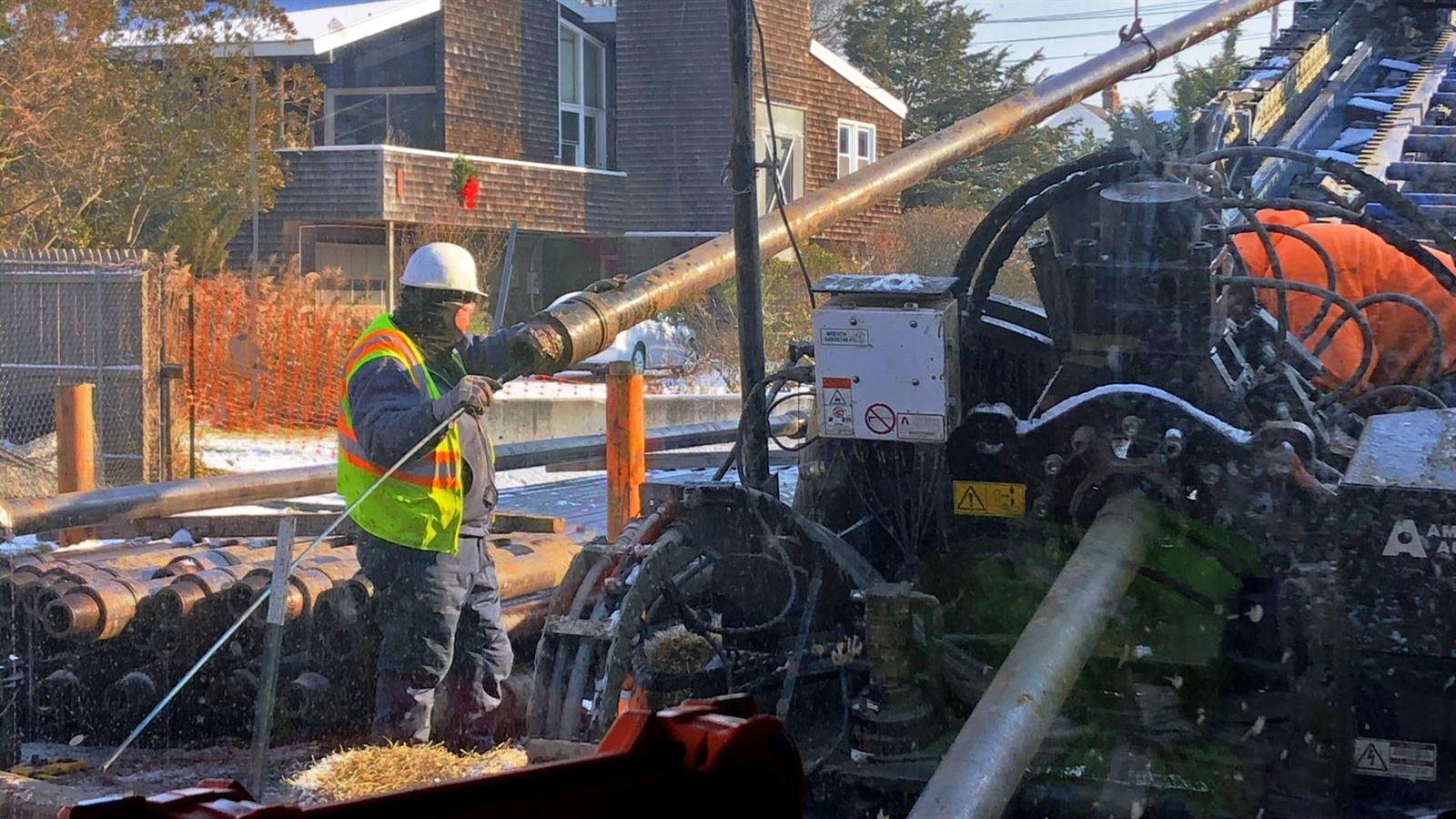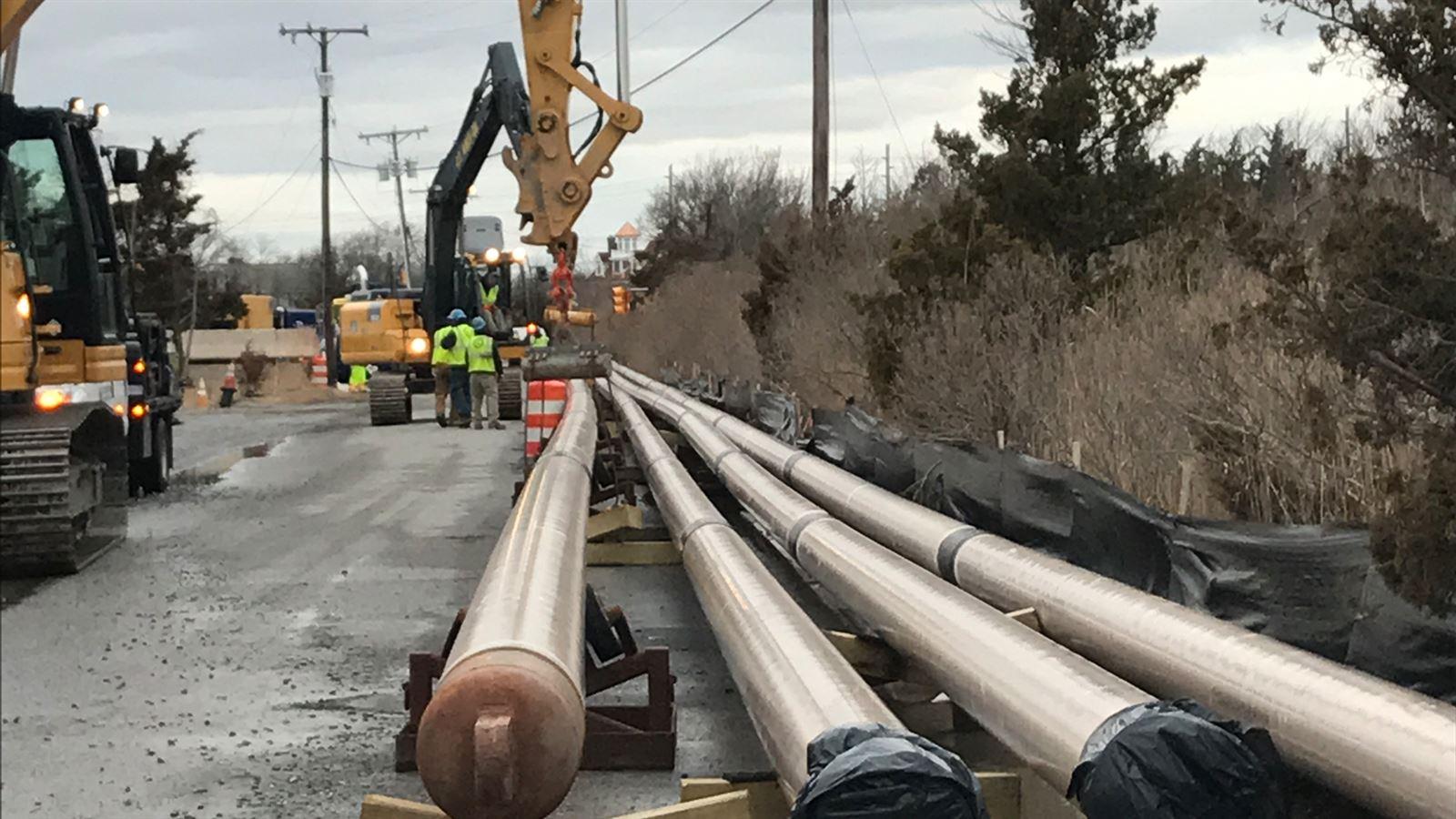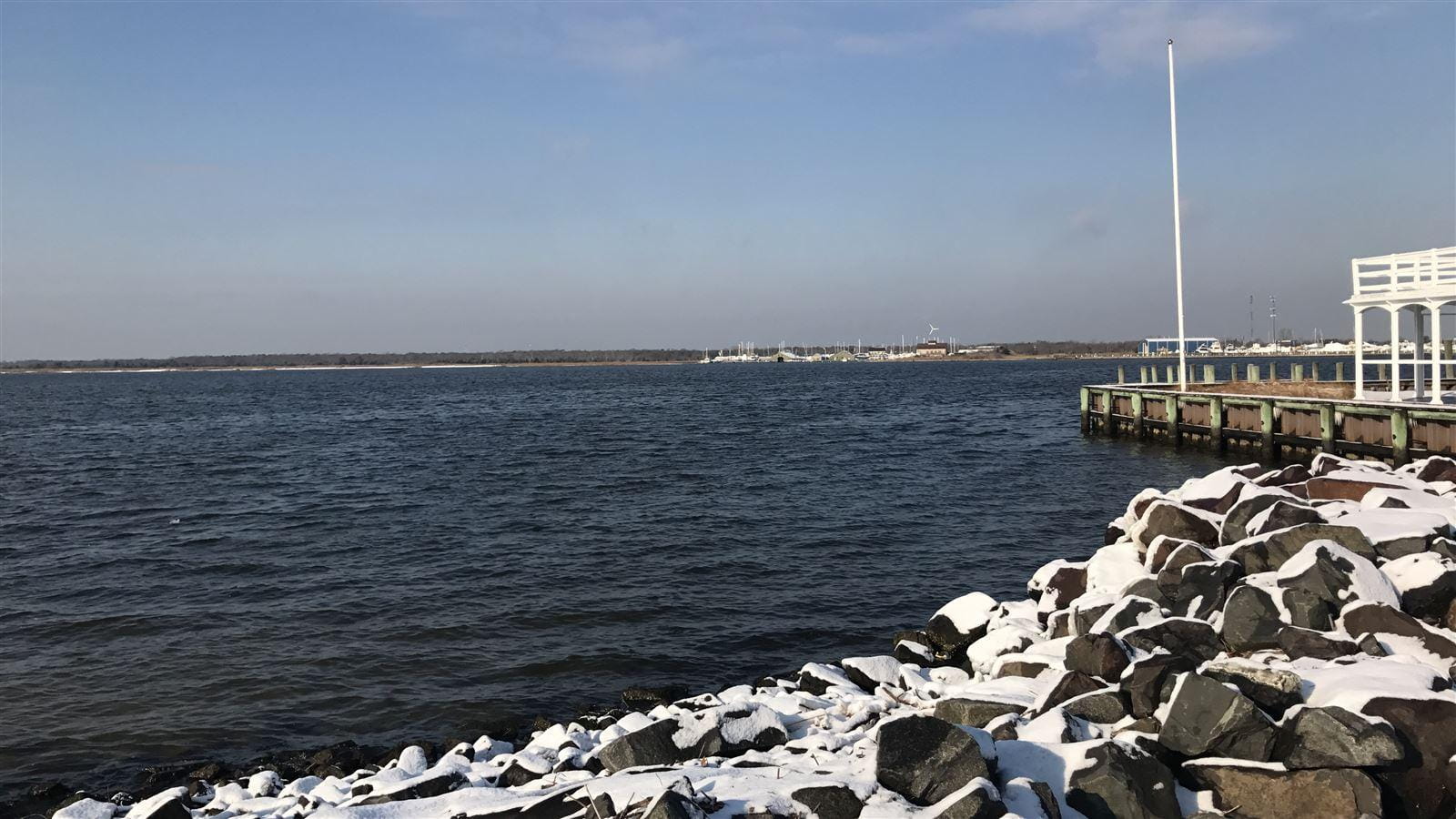Hardening Natural Gas Utilities Against Storms in New Jersey
Years after Superstorm Sandy inflicted unprecedented damage along the Atlantic seaboard in 2012, utilities like New Jersey Natural Gas (NJNG) continue to reinforce their infrastructure. NJNG, which provides natural gas service to more than 500,000 homes and businesses, launched a $102.5 million program in 2014 called New Jersey Reinvestment in System Enhancements (NJ RISE) to invest in the resiliency of its natural gas mains and help minimize the impacts of extreme weather events.
As a part of NJ RISE, CDM Smith was involved in the North Seaside Reinforcement project. It called for the installation of a new 12-inch diameter steel natural gas pipeline under Barnegat Bay, which lies between the mainland and adjacent barrier islands in Ocean County, New Jersey. Installing the 3,290 linear feet of pipeline required horizontal directional drilling (HDD), a trenchless drilling technique that involves steering a drill underground along a pre-defined path, crossing thousands of feet, and then pulling a continuous pipe through the bore hole from one end to the other.
CDM Smith’s scope of work included route analysis for the pipeline, environmental screening of the project area, preparation of permit applications, HDD design, wetland delineation, geotechnical surveying and easement acquisition.
Our goal in installing this pipeline was to help NJNG add durability, redundancy and stability to its gas distribution network. Sixty feet under the bay, the pipeline does that.
David Tanzi, PE, BCEE, CDM Smith vice president, project manager and environmental engineer, explained that the team was able to overcome two major challenges during the detailed design phase. First, the team was able to avoid environmentally sensitive areas and assist NJNG with obtaining easements for the drilling and pipe lay-down locations.
The second major challenge facing the team was how to organize the staging area for the pipeline after drilling of the initial pilot hole. “We had to locate enough space on one side of the bay to lay down and string together thousands of feet of pipeline before it could be pulled to the other side,” he said. This proved to be a difficult task, and adding complexity to the matter was the weather. Construction would have to be completed in the winter, after the tourist season. “Our success hinged on having very qualified people on our team. CDM Smith, the contractor and NJNG staff collaborated closely during both the design and construction phases to map out a smart and safe plan.” By taking the proper precautions to protect everyone on site, as well as the equipment, Tanzi said that there were no safety incidents on the project.
With the new pipeline in place, Tanzi said that NJNG’s infrastructure will be less susceptible to extreme weather conditions. “Our goal in installing this pipeline,” he said, “was to help NJNG add durability, redundancy and stability to its gas distribution network. Sixty feet under the bay, the pipeline does that. It is very protected and should withstand storm events for many years to come.”













